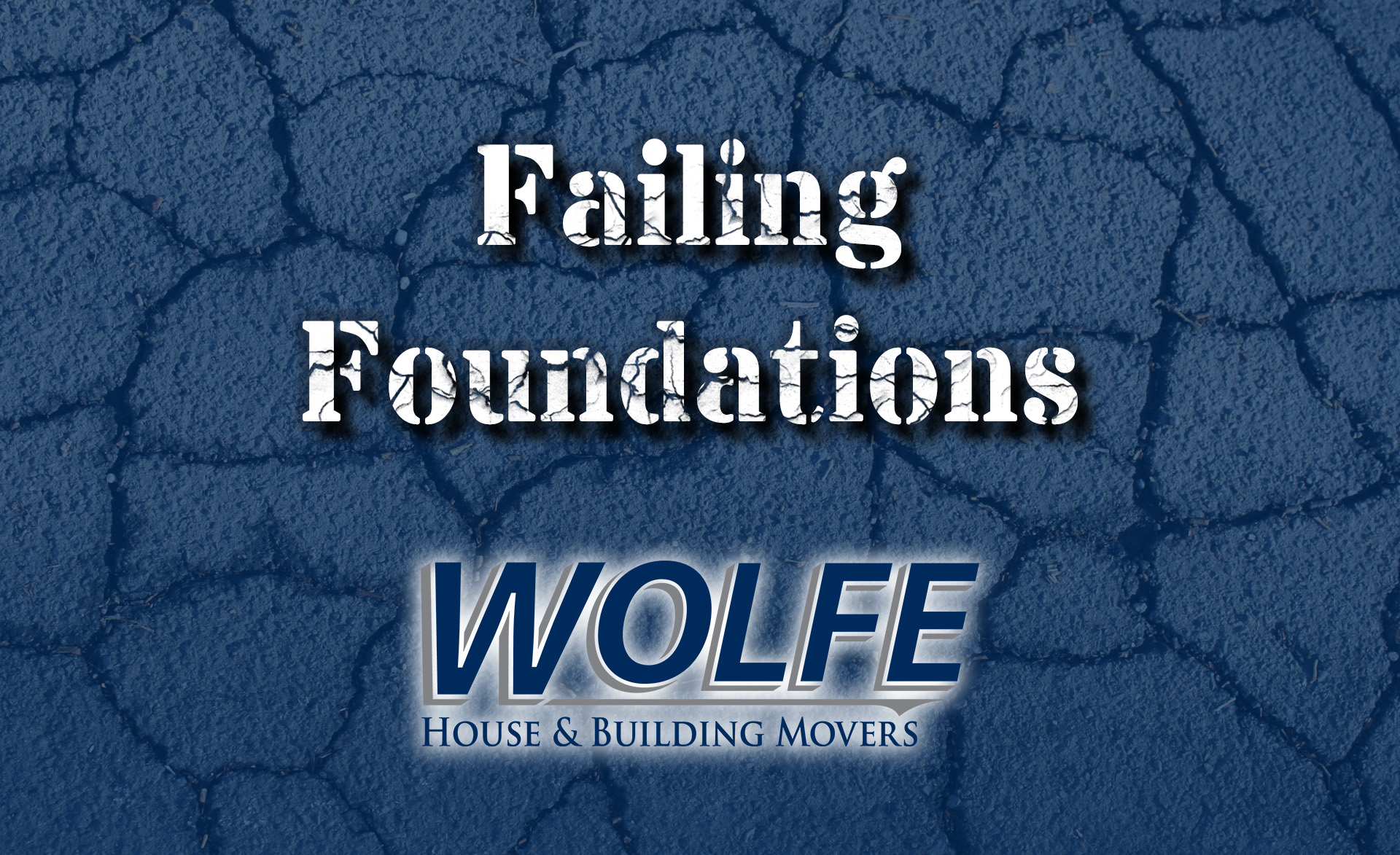In the Media
- News,
Causes of a Failing Foundation

Foundation Failures and Solutions
As we all know, the foundation of a building is essential to the building’s strength and longevity. When the foundation is sound, it gives the house stability that can last centuries. When the foundation breaks down, the house inevitably follows. Here are some issues that contribute to compromised foundations that we have seen in the structural lifting and moving industry.
Problematic Pyrrhotite
Contaminated concrete is not something your average American homeowner thinks about—that is, unless you’re a homeowner in New England whose foundation contains pyrrhotite gravel from quarries in Connecticut. In recent years, an epidemic of failing foundations has been sweeping the region, as an ever-growing number of homeowners are finding that the structural integrity of their homes is compromised by pyrrhotite in their concrete.
According to the American Geosciences Institute, pyrrhotite is a mineral known as iron sulfide. When iron sulfides are exposed to water and oxygen, a series of chemical reactions break down the iron sulfides and form new minerals called sulfates. These sulfates take up more space than the original iron sulfides. As they grow, the new sulfate minerals push against the surrounding rock, causing it to swell and crack. When concrete with pyrrhotite mixed into it is used for the foundation and walls of a house, the walls and floor gradually swell and crack, ending in significant damage to the structure. The problem quickly compounds as the cracks caused by the initial swelling increase the exposure to moisture and oxygen, causing more and larger cracks. This speeds up the damage process to the walls and can be catastrophic if not addressed in time.
Moisture Mitigation
Moisture in your home is rarely a good sign in any area of the structure, but it can become especially harmful to the overall structure when its consistent presence is near the foundation. According to insurance industry statistics in 2013, 14,000 people in the US experience a water-related emergency to their homes every day. 98% of basements in the US will experience some type of water damage during their lifespan. Of these incidents, the most costly projects are flooded foundations with 9 or more inches of water. With homes, where this is a common occurrence, drying the foundation out and getting rid of the moisture at the moment is a temporary fix. Routine water damage around the foundation will demean the overall structural integrity of the building, which will lead to long term issues and consistent headaches for homeowners. Common issues that coincide with moisture around the foundation can include mold, foul odors, staining, and numerous health complications for those who may spend a significant amount of time in a basement or foundation area where moisture is present.

Water damage to the foundation is a top issue for homeowners near bodies of water, in flood plains, or with improper drainage around the structure.
Old Masonry Foundations
Bulges in the foundation wall, loose or dislocated stones, seepage in cracks, and failing grout are just some of the issues that arise with aging or failing stone foundations. Masonry foundations come in a variety of types and from a variety of time periods. Rubble and fieldstone foundations can be seen in homes built in the 1700s, while homes built in the early 1900s may have brick or limestone. Masonry foundations include brick, limestone, sandstone, river stone, ironstone, quartzite, and basalt among others. Older foundations that use these stones may crack and break down over time, resulting in structural issues as moisture leaking into the foundation.

Various types of stone and brick foundation walls can crack and break down over time, causing issues for homeowners.
Structural Elevation as a Solution
Elevating your home to prevent water damage or to replace a failing foundation can fix persistent problems and preserve the structural integrity of the building. Whether your structure needs to be raised inches or feet, Wolfe House & Building Movers can handle the project with ease. Our Unified Hydraulic Jacking System is the latest in structural lifting technology. The hydraulic jacking pump synchronizes the flow of hydraulic fluid to the lifting jacks so that the entire building lifts evenly and steadily, even when there are significant weight differences from one area of the house to another. This keeps drywall or plaster cracks to a minimum. After the building is lifted, we support it in place while your mason builds the new foundation beneath it. Replacing the foundation can add significant usable space to your house, and will give you confidence in the integrity of your home for years to come.
Insurance Industry Statistics from 2013: Water Damage Defense


